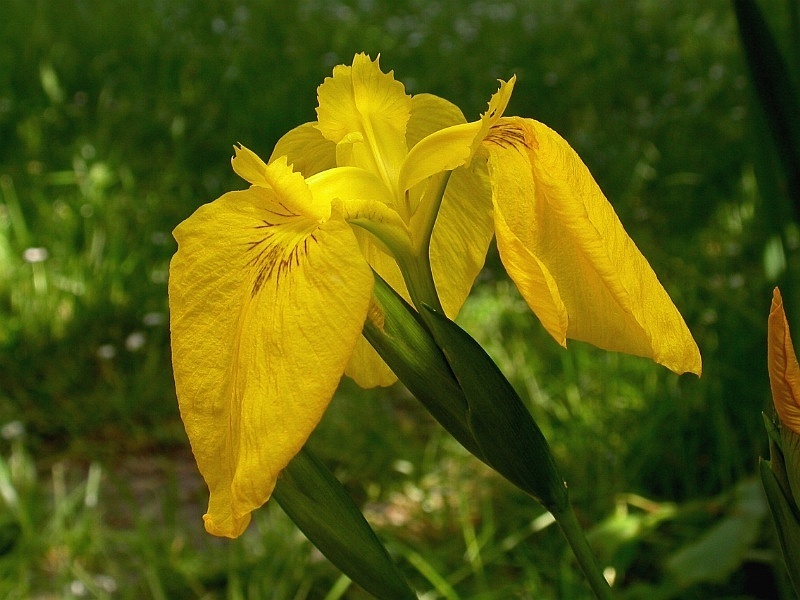Iris pseudacorus photo by Jean-Jaques Milan http://en.wikipedia.org/wiki/Iris_pseudacorus#mediaviewer/File:Iris_pseudacorus_001.jpg
Walking around the campus, I am almost cheered by the bright bloom of the yellow iris (Iris pseudacorus L. ) in the streams and along the paths toward the woods . Almost , but not cheered, it turns out, because I know two things. First, there is a lot more yellow iris on campus than last year, and second, because the yellow iris doesn’t belong here. It is an invasive species, albeit a lovely one.
Yellow iris spreads. While in some temperate regions it is still planted for horticulture, in others, like Massachusetts it has been banned. Did you know there were banned plants? Usually they are plants that are considered “noxious” even if they are attractive, because they are so hard to control. In fact, the yellow iris is on the Massachusetts list of prohibited plants. This list is not a list of all the plants you ought to avoid as a gardener but is a list of plants that are so difficult to control that “the sale, trade, purchase and distribution” are prohibited in the state. In case you think this is a case of governmental overreaching, consider that invasive species have been estimated to cost the US upwards of $120 billion a year1. In 2011 the Department of the Interior spent 100 million on invasive species from prevention to control and restoration2. Every state, the federal government, and other nations, have agencies set up to limit the spread of invasive species., which represent not only economic costs but one of the major causes of species extinctions.
I discovered that yellow iris was on this list last year when I was admiring some in a clump near the parkinglot toward the back of campus. “Wow,” I thought. “I know blue flag iris is a common native wetland plant. These yellow ones are really lovely too, I wonder why I haven’t seen them before? I wonder if they belong here?
And indeed, the reason I had not seen here is because they are not native and are only now establishing .To prevent their spread, we will need to have a plant removal day.
Look for invitation!
In the meantime, if you are looking for plants that won’t spread and cause ecological problems, I would plant natives. One place to find out about native plants is the New England Wildflower Society, both online or at their Garden in the Woods site near Framingham.
1. Pimentel et al 2005. Ecological Economics. 52:273-288.
http://www.plantright.org/pdfs/Pimentel-et-al2005.pdf
2. http://www.fws.gov/home/feature/2012/pdfs/costofinvasivesfactsheet.pdf


Isn’t it interesting that the fact that something is pretty does not guarantee it belongs or is helpful. And isn’t it interesting that intentionality is important even when considering what to plant? And in light of that, why wouldn’t the maintenance department consider asking you about their planting plans?
The physical plant people are pretty good about things like this, but the yellow iris was originally planted about 17 years ago, and was even on a list of plants suggested to Grounds for a wetland area. It subsequently escaped. We do have some in a few intentional plantings that are very confined, so I doubt they are the cause of the spread, which originally came from this group in a wet area along the edge of the woods. They wouldn’t do it today, but it will take some work to get rid of it